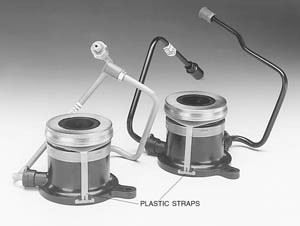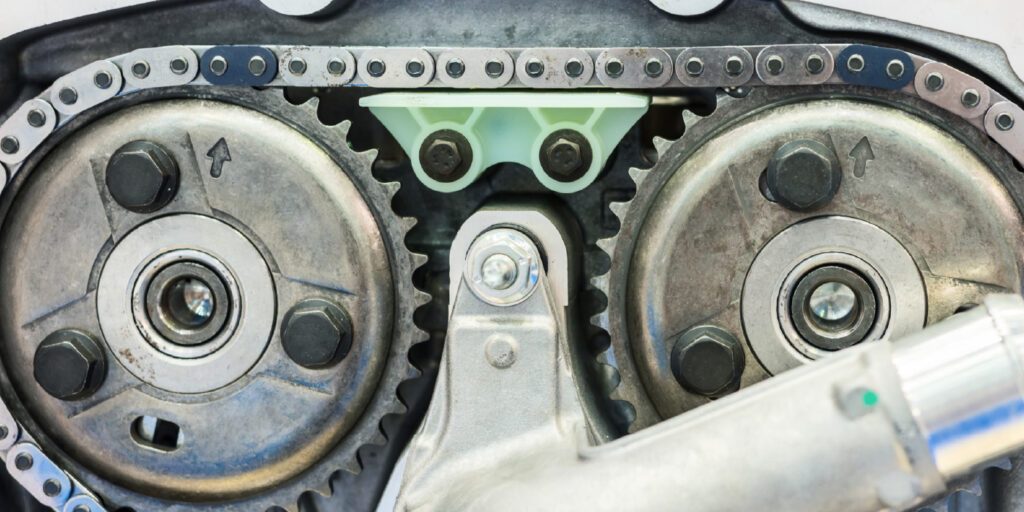Internal (Concentric) Slave Cylinders
Clutch slave cylinders located inside the bell housing require special handling to guarantee proper operation. Some designs feature plastic straps to hold the hydraulic piston in place during installation. Don’t remove them; they break free when the clutch pedal is actuated.
 Never change the position of the release bearing, you may damage the seal and void the warranty. Never drop the slave unit or bend the hydraulic lines. Inspect the new unit for damage before installation, including the protective grommets. Grommets isolate destructive vibrations and must be installed properly.
Never change the position of the release bearing, you may damage the seal and void the warranty. Never drop the slave unit or bend the hydraulic lines. Inspect the new unit for damage before installation, including the protective grommets. Grommets isolate destructive vibrations and must be installed properly.
Never grease the slave or clean it with solvents.
Always use the installation hardware included with the unit and avoid over-tightening, which may crack the housing.
Use only fresh, manufacturer-recommended brake fluid.
Special considerations: Some Jeep applications require you to remove the “quick disconnect” fittings from the hydraulic lines.
Proper Bleeding Procedures for Slave Cylinders Without Bleed Screws
Some slave cylinder designs do not include a bleed screw to purge air. The unit may have a gold Allen screw, which is not for bleeding; do not remove or loosen it. Follow this procedure for proper bleeding.
1. Push the slave cylinder pushrod inward and disconnect both bands of the retaining strap, allowing the pushrod to fully extend. Never cut or discard the retaining strap.
2. Tilt the slave cylinder at a 45-degree angle with the master cylinder line port facing upward and the port at the high end of the slave. Fill the slave cylinder with fresh, clean brake fluid.
3. Insert the master cylinder line into the slave cylinder port. Lubricate the enclosed O-ring with brake fluid and insert the retaining pin.
4. Hold the slave cylinder vertically with the pushrod facing down, so that the slave cylinder is lower than the master cylinder. If this is not possible, position the slave as far vertically as possible without putting excessive load on the master cylinder line.
5. Remove the master cylinder reservoir cap and slowly push the slave cylinder pushrod inward approximately 1", watching for air bubbles in the master cylinder reservoir. Stroke the pushrod 10 to 15 times to fully purge the air in the release system.
6. When the air is fully purged, slowly push the slave cylinder pushrod back into the slave and reconnect the two bands of the retaining strap.
7. Install the slave cylinder with the retaining strap in place. The strap will break free with the first stroke of the pedal.
Note: Do not remove the plastic cover on the end of the pushrod or the clutch will not release properly.
Courtesy of LuK Automotive Systems, 5370 Wegman Drive, Valley City, OH 44280. Phone: 800-274-5001. Fax: 330-273-3522. Website: www.lukclutch.com.











